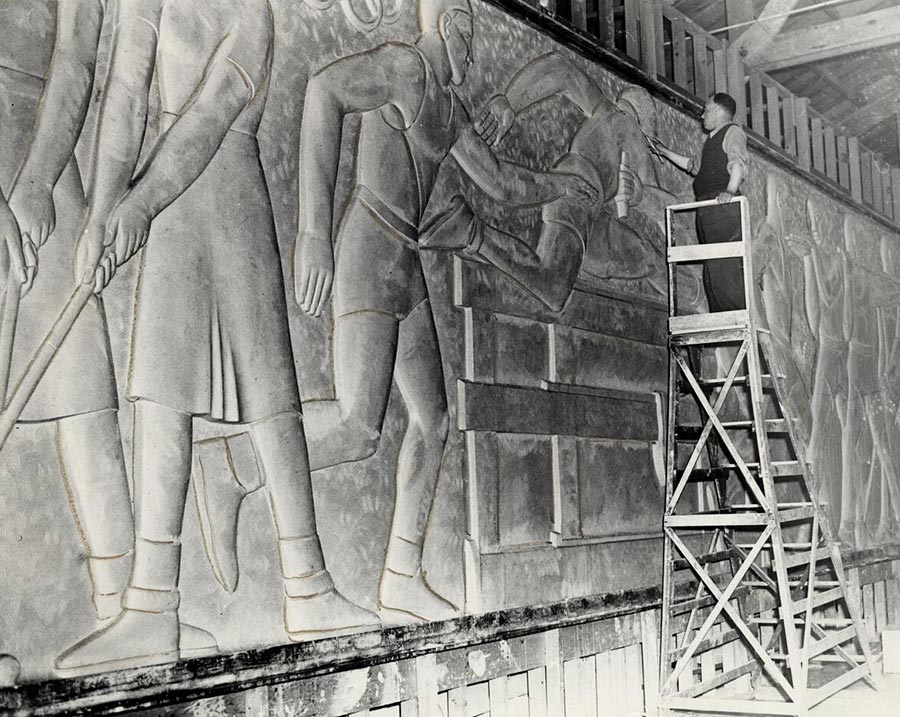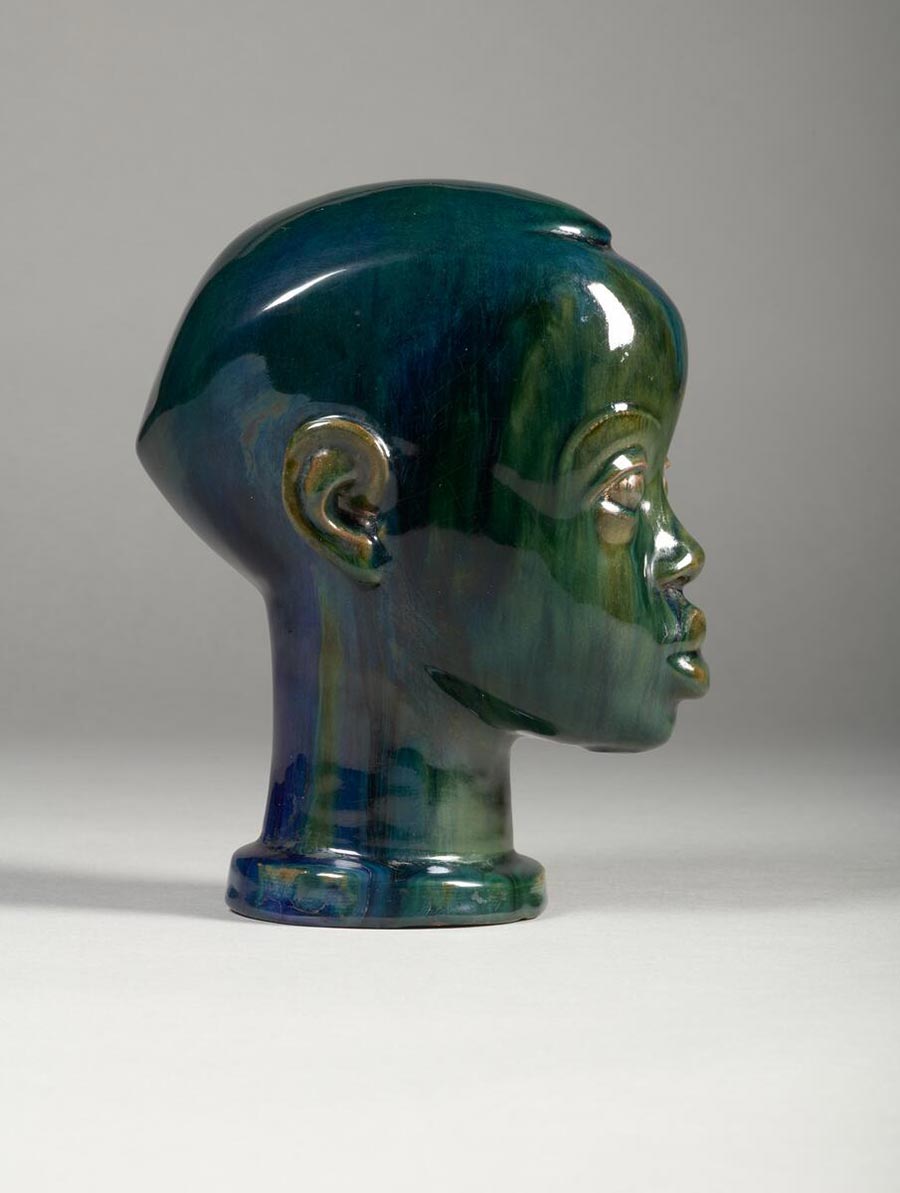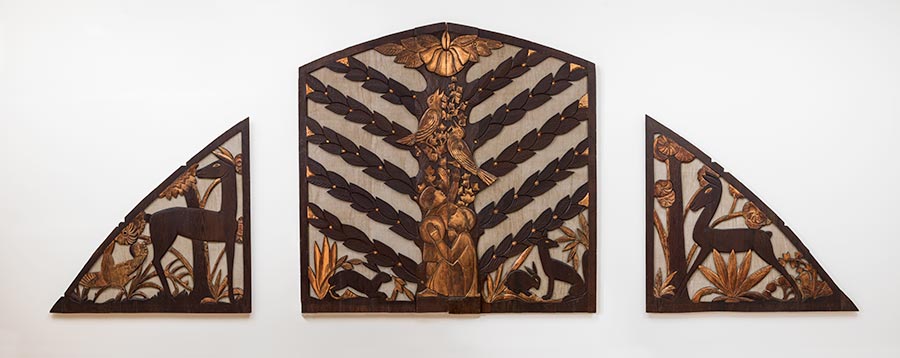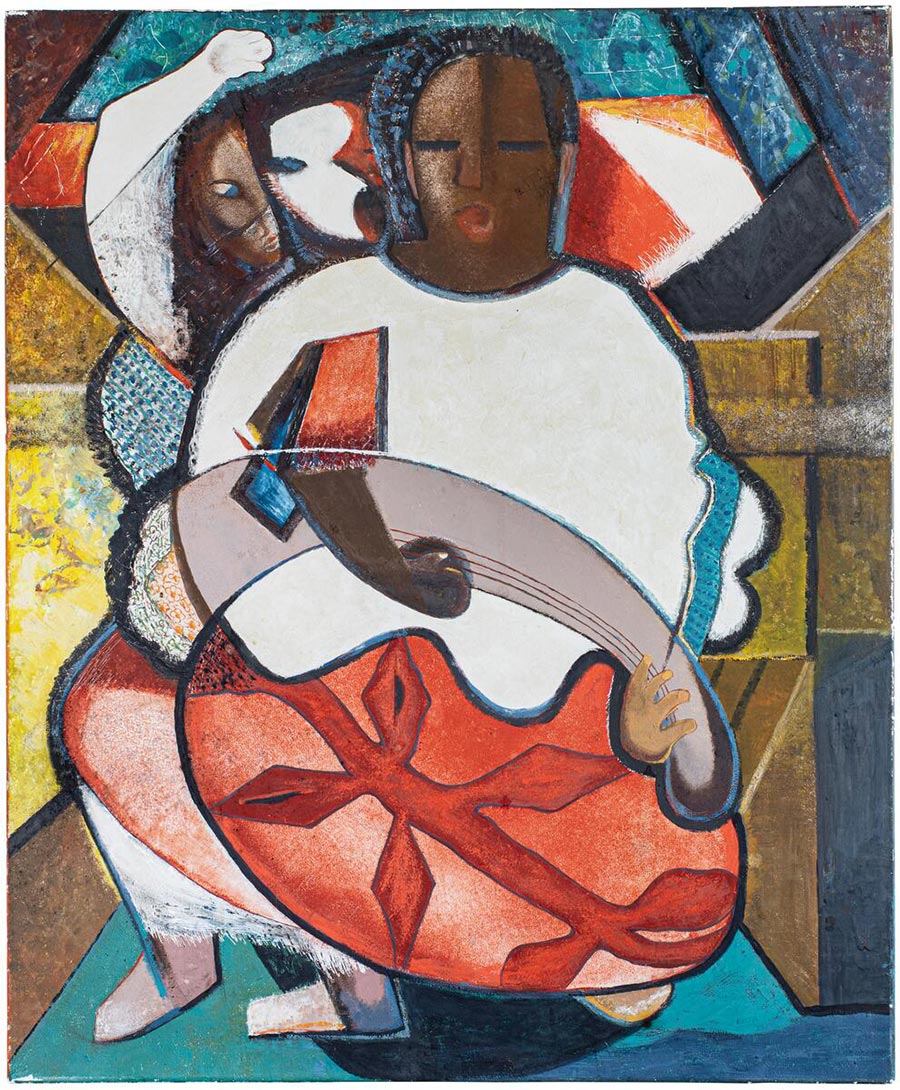
Sargent Claude Johnson working on clay model of sculpture for George Washington High School, Nov. 18, 1940. San Francisco History Center, San Francisco Public Library, San Francisco News-Call Bulletin Photo Morgue, SFP 39, MOR-0433, Box P370, Folder: Johnson, Sargent. | Courtesy of the San Francisco Public Library.
On view in The Huntington’s MaryLou and George Boone Gallery through May 20, “Sargent Claude Johnson” is a sweeping exhibition of Johnson’s powerful works that span the Great Depression to the Civil Rights Movement.
In the exhibition catalog, leading scholars examine Johnson’s artistic evolution and offer fresh perspectives on his work. From sculptures of underrepresented subjects to majestic architectural commissions, the book positions Johnson’s oeuvre within an expansive framework of global modernism.
In the following excerpt from the catalog’s introduction, John P. Bowles, associate professor of African American art at the University of North Carolina at Chapel Hill; Jaqueline Francis, professor of the history of art and visual culture at California College of the Arts; and Dennis Carr, the Virginia Steele Scott Chief Curator of American Art at The Huntington, provide a brief overview of Johnson’s career.

Sargent Claude Johnson (1888–1967), Head of a Boy, ca. 1928. Glazed terracotta, 7 1/2 × 4 3/4 × 6 in. (19.1 × 12.1 × 15.2 cm). Purchased with funds from the Art Collectors’ Council and the Virginia Steele Scott Foundation Acquisition Fund for American Art, 2015.5. | The Huntington Library, Art Museum, and Botanical Gardens.
In the long arc of brilliant African American cultural production in the twentieth century, the art of Sargent Claude Johnson (1888–1967) stands out. His powerful and sensitive artworks—masks, portrait busts, figural sculptures, drawings, and prints created in the 1920s and 1930s—are emblems of the Harlem Renaissance, or conceived more broadly, a documented cultural renaissance that took place in a number of American cities. A San Francisco Bay Area resident, Johnson forged his career outside of Harlem, New York City’s historically Black neighborhood. His work was recognized in the Bay Area and beyond, for his art was seen nationally in touring exhibitions of African American artists’ production organized by the Harmon Foundation and in other exhibitions of modern American art. Johnson remained active after the interwar burst of Black creative expression in music, dance, literature, and the visual arts. Today, as scholars have increasingly argued for a more expansive geography and longer duration of the Black Renaissance, Johnson’s prominent role within this influential modernist cultural movement comes into clearer focus.

Sargent Claude Johnson (1888–1967), Organ Screen, 1933–34. Gilded and painted redwood, 105 × 264 × 2 in. (266.7 × 670.6 × 5.1 cm). Purchased with funds from the Art Collectors’ Council, the Connie Perkins Endowment, and the Virginia Steele Scott Acquisition Fund for American Art in honor of George Abdo and Roy Ritchie, 2011.5. Commissioned by the Federal Art Project for the Works Progress Administration (WPA). The Huntington Library, Art Museum, and Botanical Gardens. | Photo © 2014 Fredrik Nilsen.
Johnson’s career spanned the Black Renaissance through the Civil Rights Movement of the 1950s and 1960s. At its heart, his oeuvre was devoted to giving voice to the lives of Black people. Johnson developed a rich iconography, catalyzed by his engagement with diverse cultures and artists—both historical and contemporary—from whom he learned styles and techniques and whom he featured in his perennially human-centered work. He forged relationships with people of various ethnic backgrounds, including children from his neighborhood who inspired his celebrated portrait busts. He adopted influences from the ancient arts of the Americas and Europe, Asian and African formal traditions advanced over centuries, and European and Latin American modernism into his work. He made trips to Mexico, where he conversed with leaders of the muralist movement and learned from Indigenous artists, and later Japan. Through these connections and a decades-long artistic practice, Johnson actively attempted to shape modernism into a diverse and inclusive space, creating art that upended stereotypes and forged new links across time and place. Likewise, Johnson skillfully embraced a range of artistic styles and techniques, including painting, printmaking, enamelwork, and sculpture, which he frequently employed in sensitive and ennobling portrayals of people of color that illuminate his multifaceted identity as an artist.

Sargent Claude Johnson (1888–1967), Singing Saints, 1967. Tempera and enamel on steel, 30 3/4 × 25 1/2 in. (78.1 × 64.8 cm). Courtesy of Michael Rosenfeld Gallery LLC, New York. | © Estate of Sargent Claude Johnson.
This exhibition catalog brings together the work of scholars of Johnson’s career to reexamine the artist’s life and work through a new lens. The essays explore a wide range of Johnson’s most significant work from the 1920s through the 1960s—from his early figural sculptures in clay and copper, to his monumental stone reliefs and architectural commissions for the Works Progress Administration (WPA), to his innovative postwar enamel paintings. A reconsideration of Johnson sheds light on mid-twentieth-century movements that confronted artistic establishments that were historically inaccessible to Black communities. As urgent concerns are voiced regarding museums’ legacies of systemic racism, this exhibition and accompanying catalog offer an opportunity to tell a fuller story of a key American modernist. They also come at a time when an increasing number of public institutions and private collections, especially those outside the Bay Area, have taken a growing interest in Johnson’s work. Scholars have begun to recognize not only his role within the development of American modernism but also his national influence among artists during his lifetime and beyond.

Cover of the exhibition catalog Sargent Claude Johnson. | The Huntington Library, Art Museum, and Botanical Gardens.
You can read more in the exhibition catalog Sargent Claude Johnson, available at the Huntington Store. Support for the catalog is provided by Furthermore: a program of the J. M. Kaplan Fund.
The “Sargent Claude Johnson” exhibition is made possible through support from the Terra Foundation for American Art and is supported in part by the National Endowment for the Arts. Generous funding for this exhibition is also provided by an anonymous foundation, the Henry Luce Foundation, the Philip and Muriel Berman Foundation, the Steve Martin Fund for American Art, and The Ahmanson Foundation Exhibition and Education Endowment.
John P. Bowles is associate professor of African American art at the University of North Carolina at Chapel Hill.
Jacqueline Francis is professor of the history of art and visual culture at California College of the Arts.
Dennis Carr is the Virginia Steele Scott Chief Curator of American Art at The Huntington Library, Art Museum, and Botanical Gardens.



